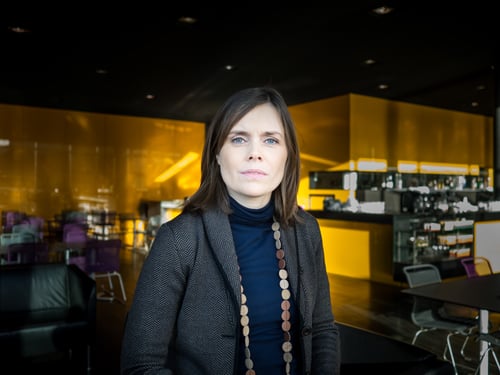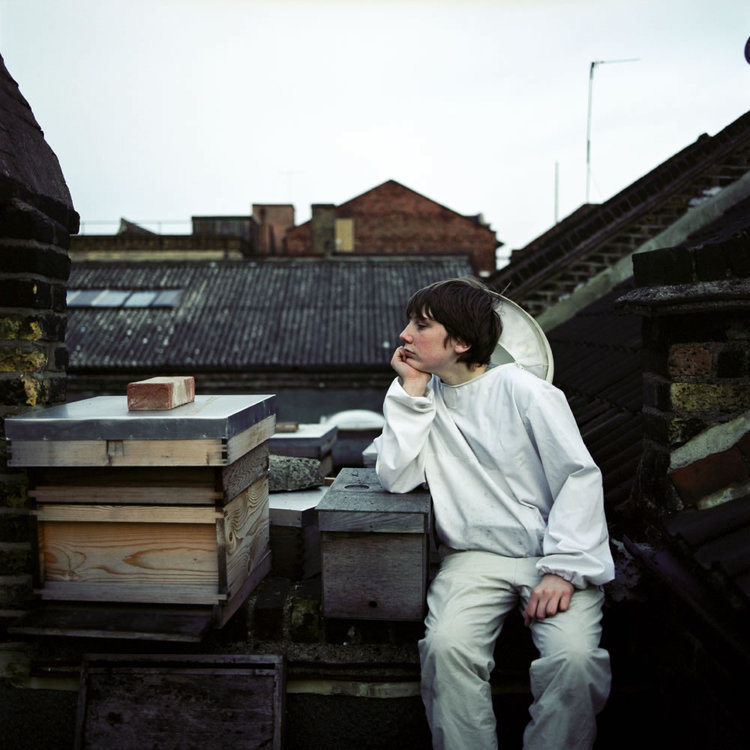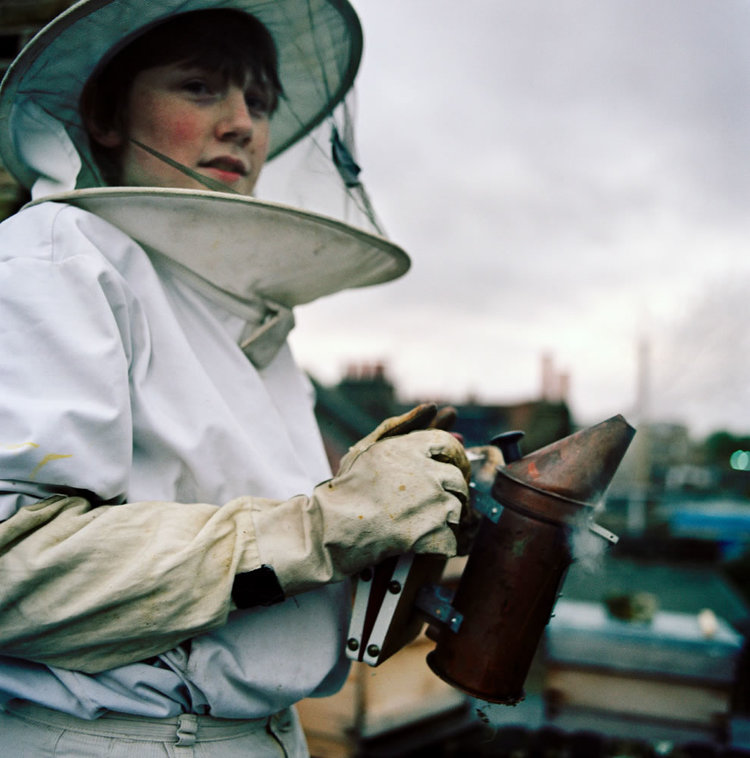
| "Photography is all about awareness" - Gabrielle Motola |
After a particularly inspiring talk from American/British photographer and writer Gabrielle Motola, I have decided to look at some of her work more closely. As I really like a particular project of hers titled The Honeyboys and some of the observed/environmental portraits she took for that series.
Motola's work consists mainly of long term social documentary projects. One in particular she discussed that I found really interesting is titled An Equal Difference which is her most recent project, that she has created a 'photo storybook' for. The book uses photographs, stories and reflections to take a closer look at the lives and perspectives of the people living in contemporary Iceland. The book focuses in on the people of Iceland after the global financial crash in 2008. Where Iceland jailed the bankers responsible, switched to an independent renewable energy source and made prostitution illegal by criminalising buyers. Iceland have been ranked first for gender equality by the World Economic Forum Gender Gap Report for the past seven years and because of this Motola has used her work to show how pursuing gender equality can benefit societies.
When looking at the portraits from this series before Motola's talk I found it really interesting how these environmental portraits often seem to capture someone in a moment of activity. Particularly in the photograph of Margret Pala Olafsdottir shown above which Motola discussed in her talk. She recalled the time she showed Olafsdottir the portraits she had taken of her and said that she responded with confusion, as she felt the photographs Motola had taken of other subjects in the project were much more flattering than the photograph taken of her. Motola said that this was a real turning point in her work as she realised she had been subconsciously seeking to flatter women with her portrait photography.
Because of this she returned to many of her edits and in the case of politician Katrin Jakobsdottir she found another photograph she thought was more representative of who she is as a person. Motola said she had also seen many articles about Jakobsdottir that all mentioned how young she looks for her age. I think that because a big element of Motola's project was exploring a culture which is ranked highest for gender equality, it occurred to her that she needed to be photographing men and women in the same way. Rather then trying to take as pretty a portrait as she could of her female subjects.
 |
Margret Pala Olafsdottir | Founder of Hjalli Schools |
When looking at the portraits from this series before Motola's talk I found it really interesting how these environmental portraits often seem to capture someone in a moment of activity. Particularly in the photograph of Margret Pala Olafsdottir shown above which Motola discussed in her talk. She recalled the time she showed Olafsdottir the portraits she had taken of her and said that she responded with confusion, as she felt the photographs Motola had taken of other subjects in the project were much more flattering than the photograph taken of her. Motola said that this was a real turning point in her work as she realised she had been subconsciously seeking to flatter women with her portrait photography.
 |
Katrin Jakobsdottir | Politician, Former Minister of Education |
Because of this she returned to many of her edits and in the case of politician Katrin Jakobsdottir she found another photograph she thought was more representative of who she is as a person. Motola said she had also seen many articles about Jakobsdottir that all mentioned how young she looks for her age. I think that because a big element of Motola's project was exploring a culture which is ranked highest for gender equality, it occurred to her that she needed to be photographing men and women in the same way. Rather then trying to take as pretty a portrait as she could of her female subjects.
I really like the more confrontational nature of Motola's photographs as the subjects are always looking directly at us as though they are waiting for a response from the audience. Which I think is particularly powerful quality in terms of the context of this project. As Motola is using this series to pose questions at an audience in regards to the social constructs of other western cultures.




 |
| The Honeyboys Images taken from gabriellemotola.com |
One of Motola's earlier projects titled The Honeyboys is what I really wanted to draw some inspiration from for my own portraiture work. As I think these images are beautiful and show some great examples of environmental and observed portraits as well as some interesting detail shots.
The idea for this project came about in 2006 when Motola met 12 year old Phillip Schild in Broadway Market where he and his stepfather Ian were selling their Hackney honey. Created from hives on the roof of their house. Motola felt that Phillip's energy was really special along with the sight of such a young boy stood in a bee keeper's suit. At 8 years old Phillip was diagnosed with aspergers syndrome and because of this his father thought bee keeping would be a good focus for him. As he was particularly fascinated by insects and knew huge amounts of detailed information about them.
In getting to know the family further Motola decided she wanted to create a project showing the relationship between Phillip and Ian as she felt it was very special, particularly with the beekeeping. So she decided to photograph them both making their honey for The Honeyboys which she has since sold as a story to The Guardian newspaper.
The images contain some really beautiful portraits which have a real warmth about them in showing this young boy and his stepfather's passion for beekeeping and their close relationship. One thing that is interesting to me is the way the photographs of Philip are often taken from below as though to illustrate how much this hobby lifts him and gives him purpose and control in his life. This has made me think a lot more about how photographers can really reflect how they feel about their subjects through their portraits. As I get the impression through this vantage point that Motola really admires Phillip for reasons such as his energy and passion.
One really strong element to these images is the consistency across them in terms of colour, framing, tonal quality and of course the square aspect ratio of the photographs. This to me I think helps the sequencing in the photographs showing the narrative of the tasks Phillip and Ian do together to produce honey on their roof. Aesthetically I love the richness of these green and brown colours against Phillip's bright white bee keeping suit; creating a real focus on him rather than just the tasks also being illustrated in the images.
Looking at Gabrielle Motola's work has given me a lot more to think about in terms of visual consistency, narrative building and also how I can communicate my own thoughts about my subjects in my photographs.

No comments:
Post a Comment